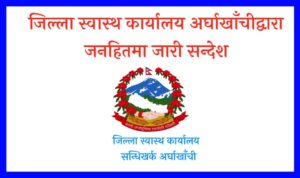29 Jun, 2021
By Laxman Kafle The Rising Nepal
Kathmandu, June 29: Rice import has increased significantly this fiscal year despite a significant increase in paddy production.
Rice worth Rs. 48.14 billion (3.48 per cent of the total import that amounts to Rs. 1,383 billion) has been imported during the first eleven months of the current fiscal year (mid-July 2020 to mid-June 2021), according to the foreign trade statistics of the Department of Customs.
This is almost 56 per cent higher than the same period last fiscal year.
The country imported rice worth Rs. 30.76 billion in the first 11 months of this fiscal year.
During the review period, paddy worth Rs. 19.55 billion and husked rice worth Rs. 28.59 billion were imported.
In the same period last year, paddy worth Rs. 9.57 billion and husked rice worth Rs. 21.19 were imported.
According to spokesperson for the Ministry of Agriculture and Livestock Development, Dr. Shree Ram Ghimire, it is a big challenge for the country that the import of rice continues to increase even when paddy production goes up.
He said that people’s habit to consume long grain rice instead of local production was the main reason behind the increase in import.
“Many people want to eat imported rice for test. Imported rice is more expensive than locally available rice so billions of rupees is spent to import rice every year,” he told The Rising Nepal.
He, however, said the growth of rice import over the years seems surprising as the production of rice has also been increasing.
“It is a must to analyse growing import of rice despite increase in production,” he said.
About 5.62 million tonnes of paddy was produced this fiscal year. But the import of rice rose by 56 per cent this year. But on the basis of national production, there should be a shortfall of only 600,000 tonnes in national demand.
The country had imported rice worth Rs. 32.57 billion in the fiscal year 2018/19 and Rs. 33.55 billion in the fiscal year 2019/20.
Dr. Ghimire said that the government had been carrying out programmes to provide seeds of paddy which the people tend to consume in order to substitute rice import.
“The result of the programmes introduced last year will be seen in the coming years.
We believe that the import of rice will decrease after production of new varieties of paddy increases,” he said.
He said that the Nepal Agriculture Research Council has been conducting research for promoting local and new varieties of paddy to increase production and make the country self-reliant in rice.
The government has set a target to make the country self-sufficient in milk and vegetables within two years, in wheat, maize, millet and buckwheat within three years and in rice within five years.





